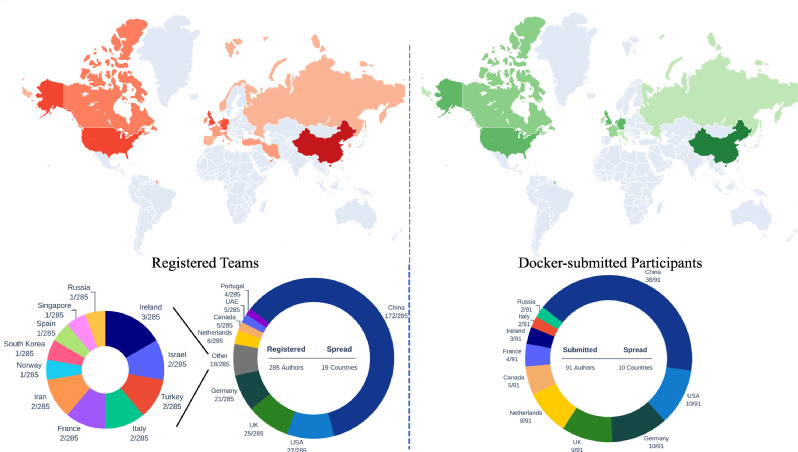

The state-of-the-art in cardiac MRI reconstruction: Results of the CMRxRecon challenge in MICCAI 2023
Jun Lyu*, Chen Qin*, Shuo Wang*, Fanwen Wang*, ..., Lianmin Wu☨, Guang Yang☨, Xiaobo Qu☨, He Wang☨, Chengyan Wang☨
Medical Image Analysis (IF=10.7)
Abstract
Cardiac magnetic resonance imaging (MRI) provides detailed and quantitative evaluation of the heart’s structure, function, and tissue characteristics with high-resolution spatial–temporal imaging. However, its slow imaging speed and motion artifacts are notable limitations. Undersampling reconstruction, especially data-driven algorithms, has emerged as a promising solution to accelerate scans and enhance imaging performance using highly under-sampled data. Nevertheless, the scarcity of publicly available cardiac k-space datasets and evaluation platform hinder the development of data-driven reconstruction algorithms. To address this issue, we organized the Cardiac MRI Reconstruction Challenge (CMRxRecon) in 2023, in collaboration with the 26th International Conference on Medical Image Computing and Computer-Assisted Intervention (MICCAI). CMRxRecon presented an extensive k-space dataset comprising cine and mapping raw data, accompanied by detailed annotations of cardiac anatomical structures. With overwhelming participation, the challenge attracted more than 285 teams and over 600 participants. Among them, 22 teams successfully submitted Docker containers for the testing phase, with 7 teams submitted for both cine and mapping tasks. All teams use deep learning based approaches, indicating that deep learning has predominately become a promising solution for the problem. The first-place winner of both tasks utilizes the E2E-VarNet architecture as backbones. In contrast, U-Net is still the most popular backbone for both multi-coil and single-coil reconstructions. This paper provides a comprehensive overview of the challenge design, presents a summary of the submitted results, reviews the employed methods, and offers an in-depth discussion that aims to inspire future advancements in cardiac MRI reconstruction models. The summary emphasizes the effective strategies observed in Cardiac MRI reconstruction, including backbone architecture, loss function, pre-processing techniques, physical modeling, and model complexity, thereby providing valuable insights for further developments in this field.
